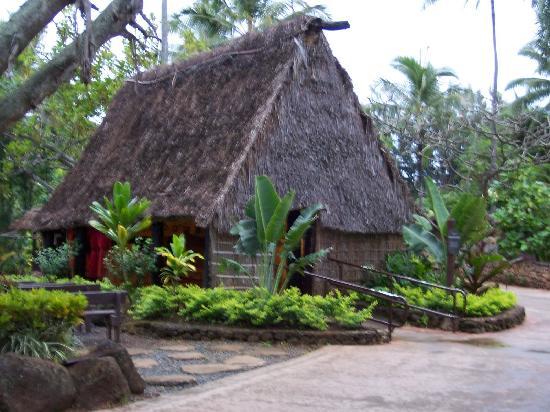Table Of Content
By using natural materials like straw, you are reducing the exposure to harmful chemicals often found in man-made products. A key reason straw bale houses are making a comeback is their energy efficiency. Straw has a high insulation factor which allows for better thermal insulation in homes.
What Are Sustainable Materials: How To Know for Sure
Straw bale homes are gaining traction in the construction industry for their potential to reduce energy costs and lessen our environmental footprint. Learn how to prevent air gaps at interior wall junctions, or posts, connected to your strawbale walls in this Straw Bale Minute video. In California, the California Straw Building Association (CASBA) is a reliable source of referrals. In Oregon, PSE Consulting Engineers, Inc. provides a link to structural engineers in and around the state versed in straw bale construction.
Plan Modifications

When constructed properly, a straw bale house can offer substantial energy efficiency and a reduced impact on the environment. In addition to their eco-friendly attributes, straw bale houses are known for their low fire hazard potential. Due to the density of the packed straw and the plaster finish, these homes present a lower fire risk compared to traditional construction materials. By choosing straw bale for your home, you not only support a more sustainable building method but also benefit from added safety features. In addition, one of the main arguments for straw bale buildings is their durability, particularly when it comes to facing extreme weather conditions. There have been numerous instances where straw bale homes have withstood tornado- and hurricane-force winds as well as wildfires.
Building in straw: a possibility for the future of living in 5 key projects - Domus IT
Building in straw: a possibility for the future of living in 5 key projects.
Posted: Mon, 29 Apr 2024 11:45:55 GMT [source]
Fire Resistance
Straw bale houses not only provide an environmentally friendly alternative to conventional building materials but also offer an extra level of fire protection. The fire resistance of these homes can make them an attractive option for those concerned about wildfire risks or simply in search of eco-sensitive building solutions. In addition to the low upfront costs, straw bale homes also offer long-term savings in terms of maintenance and utility bills.
Modifying Plans
With their impressive insulation properties, straw bale houses can help to significantly reduce energy costs for heating and cooling, contributing to a more sustainable and eco-friendly living environment. As a result, you can enjoy the benefits of both sound and thermal insulation in your straw bale home. The energy efficiency in straw bale houses can be attributed to the insulating properties of straw.
Building a Better Future with Straw Construction - Wellington Daily News
Building a Better Future with Straw Construction.
Posted: Thu, 25 Apr 2024 11:00:00 GMT [source]
Two Approaches to Straw Bale Construction
The thick walls made of straw bales offer excellent insulation and weather resistance, which is crucial in areas prone to storms and extreme temperature fluctuations. For houses with small surfaces, it’s best to use the building technique known as ‘nebraska’, which consists of stacking bales of straw in staggered rows and then linking the bales together with bamboo. Larger spaces, however, require using another technique known as ‘wood framing’ whereby owners first build the entire wooden frame before fitting the stacks of straw into the structure. Whichever technique is applied, the straw bales must then be covered with lime and coated with organic paint. Ecological and money-saving par excellence, ‘straw houses’ are arousing the interest of many future owners in france today. The increasing shortages of resources like wood are pushing locals to use straw as an alternative building foundation.
Most of the homes on the site can be easily modified to change the foundation type. The biggest advantage to using straw is affordability; a bundle costs only around €2 if owners go and collect the straw themselves. And when it comes to construction, a ‘do-it-yourself’ approach is highly encouraged since straw houses do not require a sophisticated amount of building knowledge. Finally, contrary to popular belief, straw is health-friendly, much more insulating on the long run, and fire resistant.
In addition to straw bales, other natural materials commonly used in straw bale construction include earthen plaster and reclaimed wood for support beams, further reducing the project’s environmental impact. Nebraska-style straw bale construction, for instance, stacks bales on top of each other to support the roof, eliminating the need for large structural wood beams. Earth or clay plasters can be used for the finishing of walls, which provide an organic and breathable surface that maintains a healthy indoor atmosphere.
Are Straw Bales More Efficient Than Traditional Construction?
So, let’s see what strawbale houses are and more information about prices and construction. How do you make the steel building products required for your project more sustainable? This article shows you 7 Examples of Recycled Steel Building Materials to Use to help protect the environment. Once you know the rules, you must design the house accordingly to meet all necessary safety requirements. The requirements include ensuring adequate insulation, ventilation, and fire protection systems while adhering to energy efficiency standards.
Straw bales have up to three times the R-value of conventional home insulation, along with excellent soundproofing and fireproofing characteristics. Morrison is a longtime straw bale advocate who teaches construction methods on his website. However, depending on where they came from, straw bales may arrive at the building site already containing grain-eating pests. Straw bale houses are known for their resilience to extreme weather conditions. They can withstand high winds, earthquakes, and intense humidity, providing a safe and comfortable living environment.
In addition to their unique visual style, straw bale houses offer flexibility in design and customization. You can shape and mold straw bale walls into various forms, allowing for artistic expression and inventive architecture. This feature enables you to create a personalized living space that reflects your taste and style preferences. The fusion of modern style and traditional building materials gives straw bale houses a distinctive aesthetic that sets them apart from standard construction methods. Not only do straw bale walls provide good insulation against external noise, but they also perform well in terms of thermal insulation. This makes straw bale houses an energy-efficient and cost-effective choice for homeowners.
However, it’s essential to use appropriate fire-resistant materials for plastering and maintaining the house to reduce the risk of fire. Obtaining a mortgage for a straw bale house can be more challenging than for a conventional home. Some lenders and credit unions are more open to alternative building methods and may provide financing if you can demonstrate the structural integrity and reliable construction of your straw bale house. Moisture can be a concern if the bales are not properly protected from water ingress.
A straw bale wall is pretty thick, around 18 inches (45 cm) wide, and well insulated. Today, far from being a fringe building method, straw bale construction is code-approved. It has its own section in Appendix S of the International Residential Code (IRC), which has been adopted by every state except Wisconsin.
A straw bale house is made using straw as either a main structural element, insulation, or both. The buildings are constructed by stacking rows of compact straw bales on a strong foundation before sealing with a moisture barrier and outer plaster layer. They typically have extremely thick walls with efficient thermal mass for low energy bills and year-round comfort. Building a straw bale house can be a more affordable option compared to conventional homes.

No comments:
Post a Comment